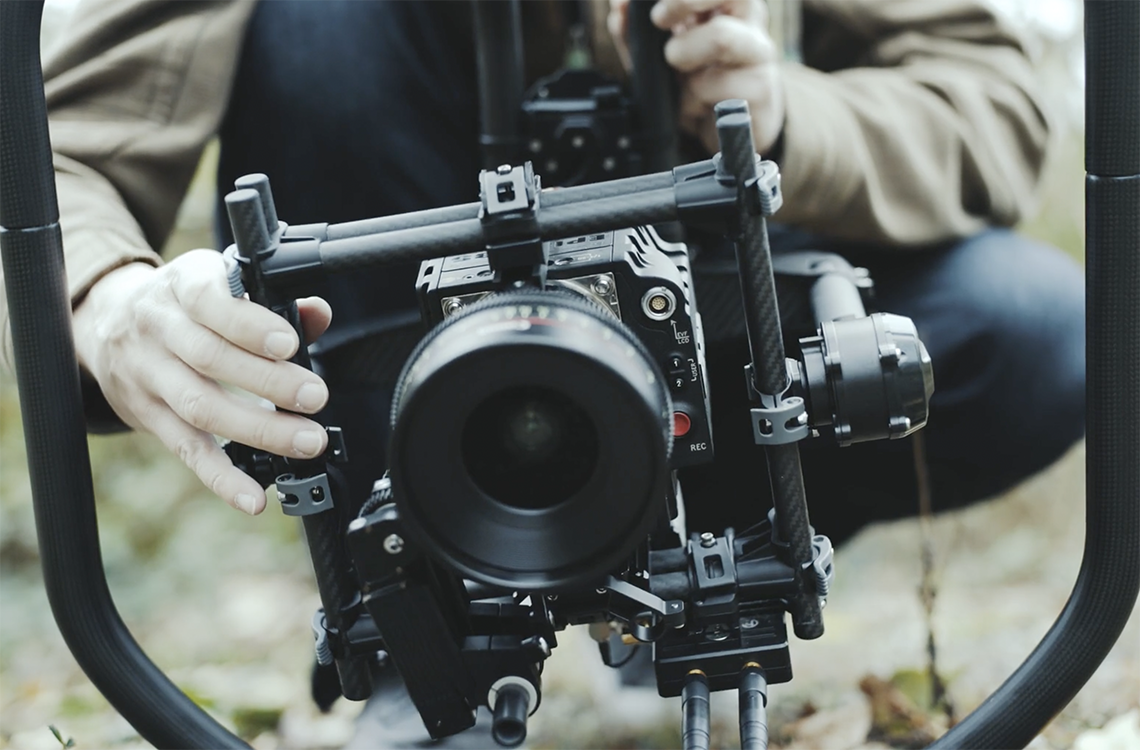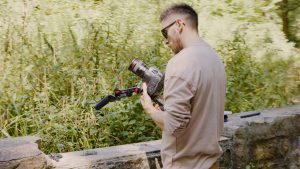Looking to improve your load-out with some stabilization gear? These were the industry leaders in 2022.
With every passing year, filmmakers see more and more gear from more and more companies offering more or less the same type of equipment with only slight differences in features and specs. This means a lot of options, and no one has the time to explore them all. One of the biggest leaps we’ve seen, technologically speaking, has come in the form of stabilization.
I remember about 10 years ago being paid for a gig, working as a production assistant, in the form of a GlideCam 2000 — because that was all I wanted. Oh, how far we’ve come! Now, in addition to the internal stabilization of many current camera bodies and lenses, we have a plethora of gimbals, easy rigs, and SteadiCams at our disposal.
Given all this gear, which option is best for you? How can you tell what will help your production, rather than hinder it?
Let’s dive in.
The Best Gimbal for Beginners
Right out of the gate, it’s important to know there are really two brands you should trust when it comes to gimbals — DJI and Zhiyun-Tech. These gimbals offer a 360° pan, 320° tilt, and 320° roll rotation (operating from an internal motor). This allows you to walk and follow your subjects on almost any type of terrain and still get smooth results. Think of those iconic free-moving tracking shots from some of your favorite movies like The Revenant, 1917, or John Wick.
The most basic model of a gimbal for a DSLR-sized camera is the Crane M2-S 3-axis gimbal, which will run you about $200 USD. So if you’re shooting with a DSLR and a small, lightweight lens, this gimbal is going to be everything you need and more. Setup is minimal, and it won’t take up too much space in your gear bag or Pelican.
If you’re leaning more toward something from DJI, I’d try out the Ronin SC gimbal. This cheap, highly capable gimbal is going to be very similar to the Crane M2-S except you can also mount a phone on top of your camera! So if you need to shoot social content simultaneously while using your A cam, you’re in luck.
Right now the Ronin SC is listed at $279 USD, which again, is extremely reasonable considering what you’re getting. Now that we’ve talked about the cheapest models, let’s level up in capability and experience with the best gimbals for intermediate shooters.
The Best Gimbal for Intermediate/Advanced Shooters
If you’re shooting something like a Blackmagic Pocket Cinema Camera 6K or a RED Komodo, the Ronin RS3 Pro is going to be the perfect fit, given its size and capabilities. Here are some of the specifications for this model:
- 10 lb Payload
- Phone Holder, Focus Motor
- Multiple Camera Control Cables
- Advanced 1.8″ OLED Touchscreen
- Instant Mode Switching, Auto-Lock Axes
- Wireless Transmitter
- Wireless Shutter Control, SuperSmooth
- ActiveTrack Pro, DJI SDK Support
- Carbon Fiber Body Weighs Only 3.3 lb
This is why I mentioned the Komodo and BMPCC6K — small- to mid-sized cameras that weigh a little more than your average DSLR body. This gimbal will be my next purchase, as I have found myself shooting more and more real estate/interior design videos lately, and this is the perfect match for my BMPCC6K.
This is currently listed at $1,100 USD, so expect to budget for this pricier option if you’re in the market.
The Best Easy Rig for Cam Ops
If you’re going to be shooting moving subjects or just carrying your camera around for hours on end, you might want to think about investing in an Easyrig setup. This is a way to stabilize your camera for moving shots, while reducing the load on your shoulders and arms.
While there are several different versions of the easy rig, the general idea of what you’re paying for is the same across the board. These rigs were designed to save you from back pain by helping support the camera.
One of the Easyrig models available for purchase is the Easyrig Minimax, which is their base model. I think this is a perfect jumping off point if you’re interested in getting into this style of shooting.
It’s important to note that these rigs require some type of top handle attached to your camera. Right now, the Minimax is listed at around $1,200 USD, but you can usually rent one for about $100 USD if you want to try it out first.
The Best Steadicam Setup for Big Camera Rigs
The obvious choice here (aside from a $10,000 SteadiCam setup) is a Mōvi stabilization system made by Freefly Systems. While this isn’t going to be cheap (it can run upwards of $5,000 or even $8,000), this is going to be your best possible solution for getting buttery-smooth tracking shots with your camera setup. There’s a reason these rigs are so expensive — you truly get what you pay for. These rigs can end up being super heavy, so often, you’ll see shooters attaching the Mōvi to their Easyrig to balance out the weight.
If it’s not obvious, this stabilization rig is for bigger, more-involved productions, so don’t think you need to get the wallet out for these if you’re just getting started.
I typically try to avoid making big purchases like this if I’ve never used the equipment before. You might find that operating a Mōvi or a big SteadiCam setup just isn’t for you, so its best to rent before you buy. Here are a few great rental resources if you’re considering using something like this on your next shoot:
These are just three remote rental houses I’ve used. Be sure to look up local video production houses near you! Support local!
Looking for some music for your projects? At Videvo, our library has everything from free ambient music to music for streams — perfect for any indie project:
- Royalty-free Christmas music
- Royalty-free meditation music
- Royalty-free upbeat music
- Royalty-free jazz music
- Royalty-free Halloween music
Need a break? Check out our videvoscapes — the ultimate reels for relaxation or concentration. Each videvoscape collects hours of high-definition nature footage and background video with downtempo chill beats for the ultimate escape from the grind.




